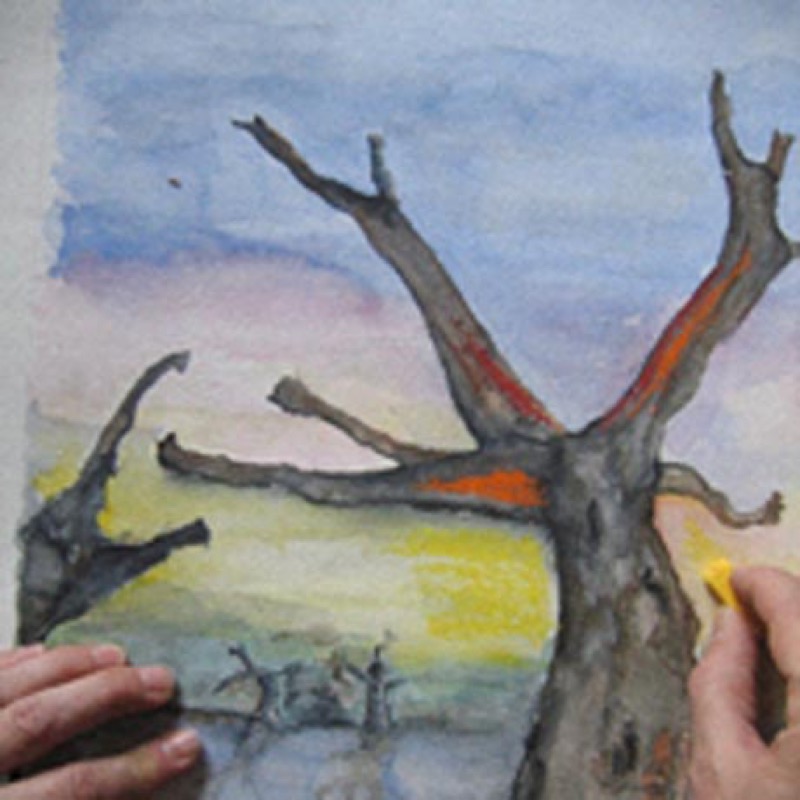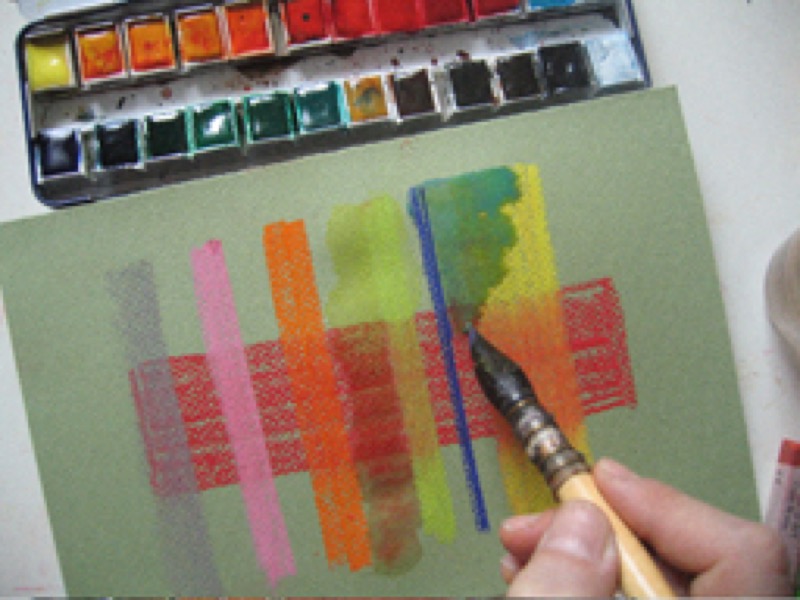Use pastels and paint together to compose rich works, made all the richer through the formal qualities of each medium.
What you need to know
When applied first, watercolors, gouache and acrylic allow you to quickly spread backgrounds and solid color areas to which you can then apply dry pastels.
Used as a finishing touch and a wash, water-based paint softens dry pastels.
Paint and oil pastels mix together perfectly at every stage of a work's creation.

1. Preparing a painted background
First, stretch a sheet of water resistant paper, such as watercolor paper.
Work preferably with diluted paint, as light washes.
Create a uniform background or sketch the major masses in color.
You can go on using paint for as long as you want, and even save your pastels for just the final details.
Allow to dry completely before using the pastels.
Trick of the trade
You can also apply dry pastels to paper that is still wet. This delicate technique allows you to achieve beautifully velvety lines.

2. Using paint while working
Apply light paint washes to pastel drawing to spread and soften colors and blur contours.
Create real impastos by alternating pastel and gouache layers, for example.
3. Enhancing a work painted with oils
An oil painting can be worked on with pastels before it is dry.
Use pastels to strengthen volumes, and to add cast shadows and dabs of light. The contrasting textures – the linearity of pastel lines versus the irregularity of the paintbrush strokes – add a lot of vigor to a work.
Recommended product:
Mi-Teintes®
